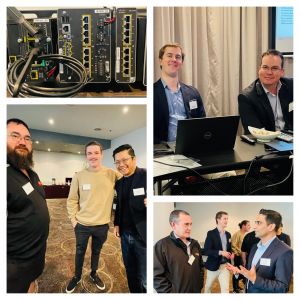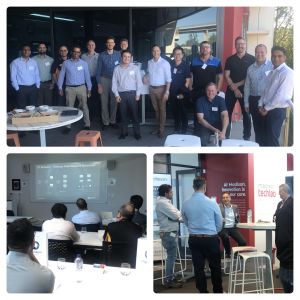
Technology challenges and opportunities in Industrial Communications
During a recent series of technology Road Shows, the Madison Technologies team has talked at length with customers in various sectors, learning about the industrial technology challenges and opportunities they are currently facing.
The series of solution days has been a great opportunity to share success stories of the implementation of new technologies and strategies that are optimising efficiency and resilience across the operational technology landscape. A number of topics and technologies have formed the basis of these conversations, including edge computing, connectivity, IIoT technologies, and the one word that is front of mind for everyone, cybersecurity.
Customers are talking about cybersecurity
Cybersecurity is an increasingly important conversation amongst our customers, especially as we see the continued convergence of IT and OT infrastructures. The merging of these two systems is creating more surface for attackers to enter through, and in several recent high-profile attacks, perpetrators gained access through vulnerabilities created by IT/OT convergence.
Confidentiality, Integrity and Availability, also known as the CIA triad, is a model designed to guide cybersecurity policies and practices, but we are also talking to our customers about Visibility.
Visibility, including visibility of what is connected to your network, the traffic on your network, how networks are segmented, what needs to be patched, and what needs to be modernised is an important element of a company’s cybersecurity practices. We’re demonstrating to customers that intrusion prevention can be achieved with smart networking technologies, helping secure network infrastructure with visibility capabilities. This makes it easy for users to identify all devices on the network and their communication patterns, and helps ensure the continuity, resilience, and safety of industrial operations.
Customers are talking about increasing efficiencies
In the face of rising demand, our customers want to know how digitisation can help them increase operational efficiency. With the advancement of edge computing, machine learning and AI, it is now possible to analyse multivariate data to predict and avoid operational failures and downtime as decisions can be derived where the asset operation is occurring. By building a model using data collected during normal operations, a process beginning to drift or change can be identified, predicting a failure before it occurs. This prediction allows preventative maintenance to be undertaken, and a complete shutdown or unplanned downtime can be avoided. Moving from reactive to proactive to predictive maintenance can enable utility providers across Australia to increase their overall operational performance.
Customers are talking about digitising data measurement
Dispersed and remote assets have a unique set of logistical challenges. The measuring and reading of meters is, in many cases, still a manual process. Conversations to improve the efficiency and accuracy of this process continue to revolve around implementing Industrial Internet of Things (IIoT) devices. Digitising this data capture process with a data logger, such as Captis IIoT data loggers, allows this data reading to be collected automatically, efficiently, and accurately.
Another example of a specific challenge our water utilities customers are facing is service interruptions from blockages. IIoT devices containing sensors are enabling wastewater utilities to monitor sewage systems and avoid overflows by alerting them to blockages before they become problems. Madison Technologies have recently provided a solution for a large Australian water authority and the proactive nature of this digitised data capture is reducing service interruptions, as well as reducing the risk to the public and the environment from spillages.



